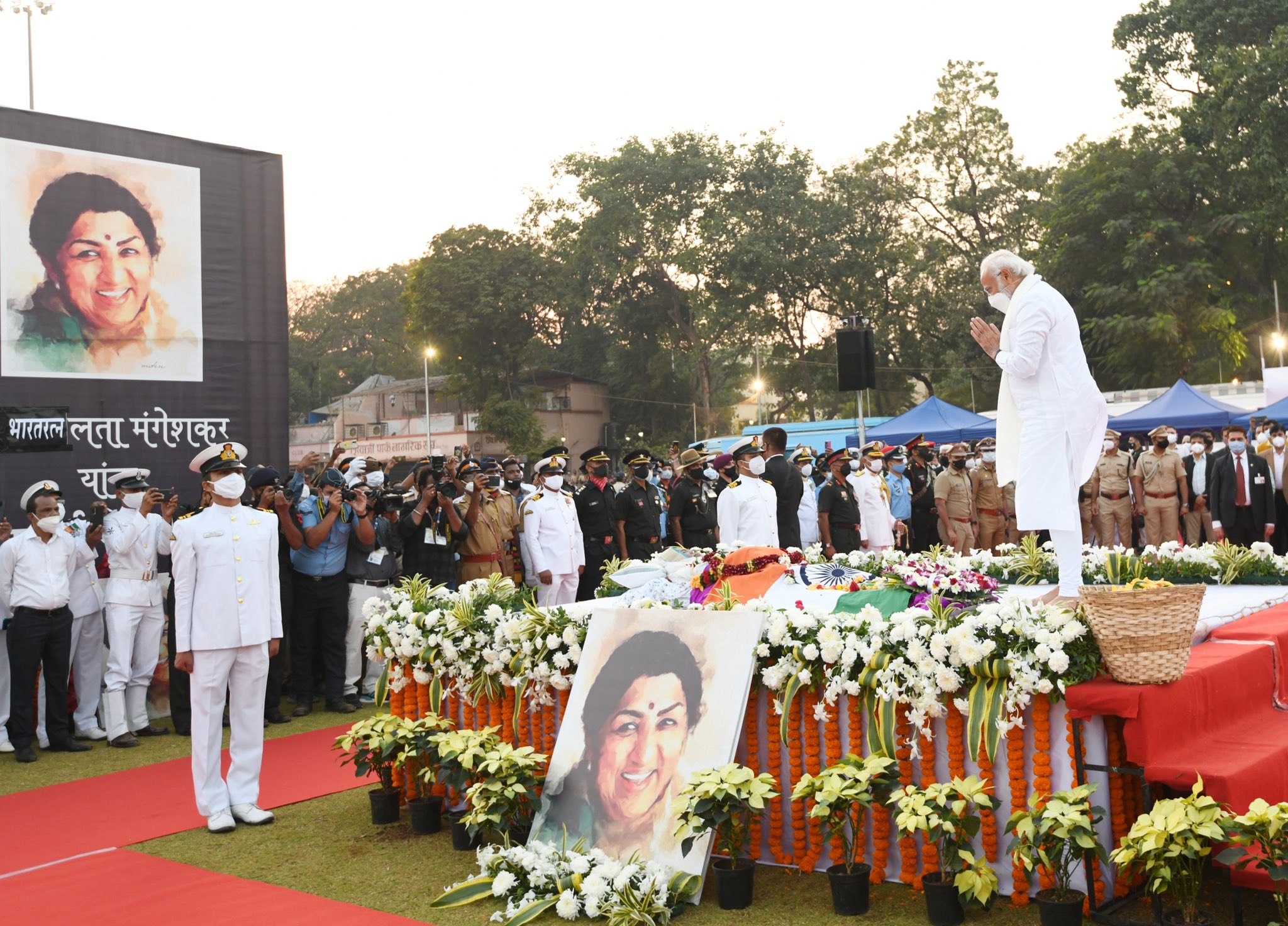How Lata Mangeshkar became the favorite of Keralites
‘Kadhali Chenkadali’ is the only Malayalam song rendered by India’s nightingale
Lata Mangeshkar has, based on all available evidence, lent her voice to about 30,000 songs, penned by established poets and ordinary songwriters alike. Whether the actual song tally is a few thousand more or less than the 30,000 is immaterial, because her body of work will remain unmatched by the sheer tonal quality.
As a Malayalee, it is relatively easy for me to pull out my favourite nugget from those songs: ‘Kadhali Chenkadali’ from the 1974 Malayalam movie ‘Nellu’. Just that one lilting song the movie ‘Nellu’- a forgotten classic now – is enough for any Malayalee to claim the late Mangeshkar as one of his or her own.
‘Kadhali Chenkadali’ – penned by Vayalar Rama Varma – distils the beauty of the Kerala landscape into one everyday object ‘Kadali’, which is a type of plantain that is common in the south Indian state. What’s different about this song is that it stays well away from the usual tropes that define a poet’s version of the ideal Kerala imagery: rivers, hills and stretches of paddy fields.
Also remarkable about the song was Lata’s razor-sharp rendering. Malayalam is never a language easy on the tongue for anyone who is not versed in it. Sure, there are moments in the song where Lata’s foreignness to Malayalam shows up, but I for one will not nitpick.
On this day of her death, it will be that one song any Malayalee will claim to be part of the Lata legacy, meticulously built through years of sheer dedication and genius. A legacy that spanned not just 70-plus years, but more than 20 Indian languages. (As an aside, ‘Kadali Chenkadali’ was put to music by another non-Malayalee: Salil Chowdhury, that versatile Bengali composer.)
A non-conformist
The world over, today and forever, Indians and anyone who feels music is about doing away with boundaries will go over their playlists to hear Lata’s songs. The one thing about Lata beyond her musical virtuosity is the depth of her repertoire. The millennials and Gen-Zers will discover Lata if they listen to ‘Dilwale Dulhaniya Le Jayenge’ soundtrack. Beyond music, this is the time to remember her legacy beyond the realm of songs. She dominated an industry where it was difficult for a woman to assert her identity and independence. That didn’t prevent her from claiming her rights, especially concerning copyright and how singers should benefit. Which eventually meant falling out on various occasions with legendary Indian singer Mohammed Rafi and the great music composers Naushad, O P Nayyar or Shankar-Jaikishen. Incidentally, record companies from the 1960s onwards danced to Lata’s tunes.
Efforts were mounted to challenge the ‘Mangeshkar Monopoly’, but ended as dismal failures. Only O P Nayyar managed to stick to his stance of not working with Lata, which turned out to be the perfect career boost for Asha Bhosle, Lata Mangeshkar’s younger sister..
Eternal music
All said and done, music lovers should on this day say a word of thanks to the career stretch that Lata enjoyed. Hindi film music took a long time to emerge from the untimely deaths of its trio of singers: Mukesh (1976), Rafi (1980) and Kishore Kumar (1987). The 1980s were the lost years for Hindi films on the music front when lyrics turned into nursery rhymes and melody became a casualty. Even then, Lata did manage to float above the fray, with ‘Dikhayi Diye’ from 1980’s ‘Bazaar’ and ‘Man Kyon Behka Re Behka’ from 1984’s ‘Utsav’.
Then came the 1990s, with Nadeem-Shravan, Kumar Sanu, and AR Rahman emerging as saviours. And Lata was there to lend her voice to Hindi film music’s renaissance, first with 1995’s DDLJ and then in 1997 with ‘Dil Se’s’ ethereal ‘Jiya Jale’.
No full stops in this musical note
Raj Kapoor said – in a documentary on him by Simi Garewal – that when Mukesh died in 1976, he “lost his voice”. The same can be said of Shammi Kapoor and Rafi, and of course Rajesh Khanna and Kishore.
The same will not hold for Lata and the many who have used her melodious voice on screen. Madhubala to Mugda Godse, Asha Parekh to Zeenat, Lata had been their voice act on screen.
Today, the voice that has been India’s soul has been stilled, but the music that defines each moment associated with Lata Mangeshkar keeps on playing forever.
Soak in some Lata magic from some of her 30,000-song repertoire
All are equal in the eyes of God Ramanujacharya’s Statue of Equality unveiling by PM Modi
The top 10 Super-Billionaires in this world, iiQ8, Top 10 Business Billionaires
No Ban on Bitcoins Crypto Currency in India, Digital Rupee Next Fiscal Year
Why you should attend AIM Global 2022? , Join Annual Investment Meeting, Register for AIM 2022
Indian Embassy in Kuwait Working Hours & Holidays for 2022, Holidays, Working Time

